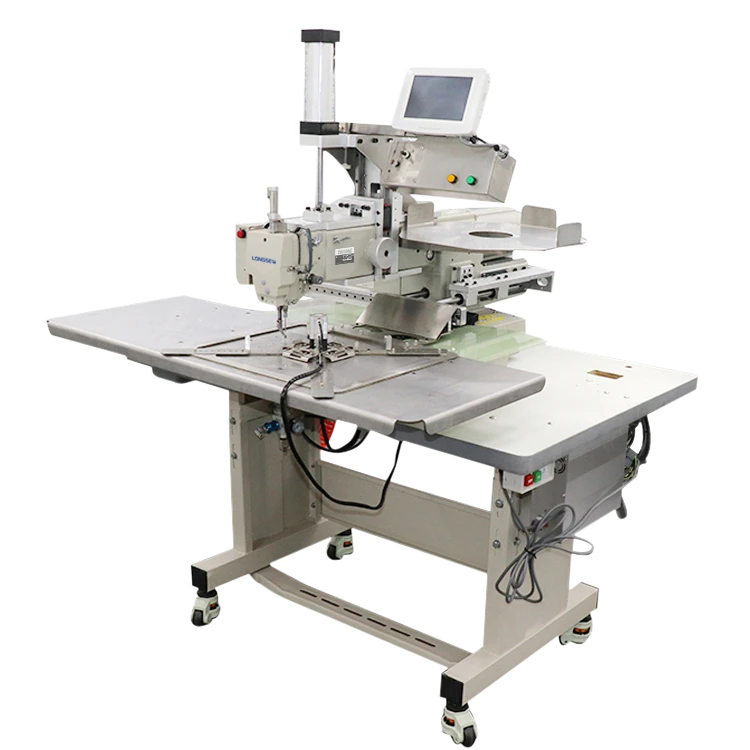Understanding the Functionality of Double Stitch Machines in Textile Production
Understanding Double Stitch Machines Enhancing Precision in Sewing
In the world of textile manufacturing and garment production, efficiency and precision are essential. Among the various machines that play a critical role in this industry, the double stitch machine stands out for its unique capabilities and advantages. This article will delve into the mechanics, benefits, and applications of double stitch machines, explaining how they enhance productivity and ensure high-quality results in sewing operations.
What is a Double Stitch Machine?
A double stitch machine, commonly referred to as a double needle sewing machine, is a specialized device that uses two needles simultaneously to create parallel rows of stitches. Unlike traditional single needle machines, which can only create a single line of stitching, double stitch machines offer a more robust and decorative seam finish. This type of stitching is particularly valuable for creating hems, seams, and topstitching, as it provides added strength and durability to the fabric.
The Mechanics Behind Double Stitch Machines
The operation of a double stitch machine is based on unique mechanics that distinguish it from conventional sewing machines. While standard machines are equipped with a single needle and bobbin, double stitch machines feature two needles, each operating in synchronization with a single bobbin or two separate bobbins. This allows the machine to sew two parallel lines of stitches at once while creating a finished appearance that is both functional and aesthetically pleasing.
The setup of a double stitch machine often requires careful threading and calibration
. Operators must ensure that both needles are correctly threaded and that the tension is evenly adjusted to prevent any mishaps during sewing. Additionally, some machines come with features such as adjustable stitch width and length, allowing for greater customization based on project needs.Benefits of Using Double Stitch Machines
double stitch machine

1. Increased Productivity By sewing two lines of stitches simultaneously, double stitch machines significantly reduce the time spent on sewing tasks. This is particularly beneficial in high-volume production settings where time efficiency is paramount.
2. Enhanced Durability The double stitching technique provides a stronger seam compared to single stitching. This results in garments and textiles that can withstand greater stress and wear, making them more durable over time.
3. Aesthetic Appeal Double stitch machines produce visually appealing seams. The parallel stitching creates a professional finish that is often sought after in fashion and upholstery. This aesthetic quality can elevate the overall appearance of a garment, attracting consumers and enhancing brand reputation.
4. Versatility Double stitch machines are versatile, suitable for a wide range of fabrics, including denim, canvas, and lightweight textiles. Whether it’s for casual wear, workwear, or outdoor gear, these machines can handle various stitching requirements efficiently.
5. Cost-Effectiveness The initial investment in a double stitch machine may be higher than that of a standard sewing machine, but the long-term benefits in terms of reduced labor costs and minimized material waste make it a cost-effective choice for manufacturers.
Applications in the Industry
Double stitch machines are widely used across various sectors within the textile industry. They find applications in
- Garment Manufacturing Used for creating seams and hems in a variety of clothing items, from casual wear to formal attire. - Upholstery Fabrication Essential for stitching indoor and outdoor furniture covers and other upholstery projects, ensuring durability and a polished look. - Technical Textiles Employed in the production of specialized textiles, such as automotive interiors and protective clothing, where strength and reliability are critical. In conclusion, double stitch machines play a vital role in modern sewing operations, enhancing both productivity and quality. Their ability to produce sturdy and visually appealing seams makes them an invaluable asset in the textile industry. As technology advances, we can expect further innovations in the design and capabilities of these machines, paving the way for even more efficient sewing practices in the future.
-
Heavy Duty Leather Sewing Machine: A Must-Have for Professional LeatherworkNewsMay.28,2025
-
Leather Sewing Machine: Essential for High-Quality LeathercraftNewsMay.28,2025
-
Extra Heavy Duty Sewing Machine for Premium Leather ApplicationsNewsMay.28,2025
-
Walking Foot Cylinder Arm Sewing Machine: Precision and Power CombinedNewsMay.28,2025
-
Industrial Cylinder Arm Sewing Machine: Engineered for High-Performance StitchingNewsMay.28,2025
-
Cylinder Bed Sewing Machine: A Powerful Solution for Precision StitchingNewsMay.28,2025
-
Zigzag Sewing MachineNewsMay.12,2025





























